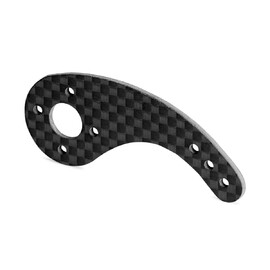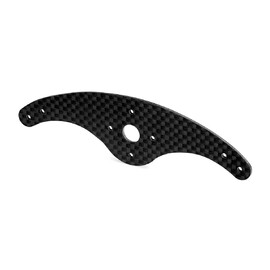No products
Product successfully added to your cart
There are 0 items in your cart. There is 1 item in your cart.
Futaba HPS-A701 (16kg 0.06s / 60 °)
FUT5102703
New product
2 pcs
- Available in Prague 9 store: 3 pcs
-9,50 €
More info
Recommended accessories
More info
Extremely fast programmable low-profile digital S.BUS2 / S.BUS servo with AC motor, with metal gears and output shaft mounted in two ball bearings with increased supply voltage. Ideal for precision aerobatics in F3A aircraft models and similar applications.
You can connect the HPS-A701 to the S.BUS 2 (serial bus with bidirectional communication) or S.BUS (serial bus with unidirectional communication) receiver outputs, or it can function as a standard servo connected to the channel (PWM) output of the receiver.
Using the CIU-3 USB interface and an S-Link PC program or a Futaba transmitter equipped with the S.BUS servo setting function, you can program a wide range of servo parameters (speed, amount of deflection, neutral, overload protection, soft start, etc.). Channel setting for operation on the S.BUS2 / S.BUS bus is only possible with the help of a transmitter.
Increased supply voltage 6.0-7.4 V. Requires the use of a battery with high current carrying capacity, do not use UBEC stabilizers.
What Is S.BUS2 / S.BUS
- S.BUS - Futaba serial bus with one-way communication enabling control of servos, controllers, switches, gyroscopes and other compatible RC devices connected to a single output port of the S.BUS receiver.
- S.BUS2 - Futaba serial bus for bidirectional communication enabling (as S.BUS) control of servos, controllers, switches, gyroscopes and other compatible RC devices connected to a single output / input port of the S.BUS2 receiver. In addition, it allows the connection of telemetry sensors and the transmission of data from them via a receiver for display on the transmitter; from some S.BUS2 servos can transmit information about the operating current, temperature or angle of the servo output lever to the transmitter.
Unlike conventional S.BUS (2) RC kits, the system uses serial data communication to transmit control signals from the receiver to a servo, gyro or other device. This data contains commands such as "move servo channel 3 to 15 degrees, move servo channel 5 to 30 degrees" for multiple devices. S.BUS (2) devices only execute commands corresponding to their own set channel. For this reason, it is possible to connect several servos to the same signal cable, while setting and controlling them individually as needed. The servo identification code (ID) is used for this. You can find the ID on the sticker on the servo box.
The S.BUS2 servo can be connected to both S.BUS2 and S.BUS ports of the receiver. Its function is given by setting the channel in the servo memory (it is performed using the programming interface of the Futaba transmitter, SBC-1 programmer or CIU-3 USB interface with PC program S-Link - for some servos the channel can be set only with the transmitter).
The S.BUS2 servo connected to the channel output of the classic receiver (PWM) works like a classic servo. Its movement is given by a signal in the channel of the receiver to which it is connected. The settings of the programmable servo functions remain valid.
| Servo size | Standard |
| Servo type | Digital |
| Thrust at 6.6 V [kg / cm] | 14.5 |
| Speed at 6.6 V [s / 60st.] | 0.07 |
| Thrust at 7.4 V [kg / cm] | 16 |
| Speed at 7.4 V [s / 60st.] | 0.06 |
| Servo gears | Metal |
| Ball bearings | 2 × |
| High voltage | Yes |
| Power supply [V] | 5 - 8.4 |
| Length [mm] | 40.5 |
| Width [mm] | 21 |
| Height [mm] | 26.9 |
| Weight [g] | 48 |
| Intended for | Aircraft |
| S.BUS | Yes |
| S.BUS2 | Yes |
| SR mode | No |
| Water resistance | No |

























